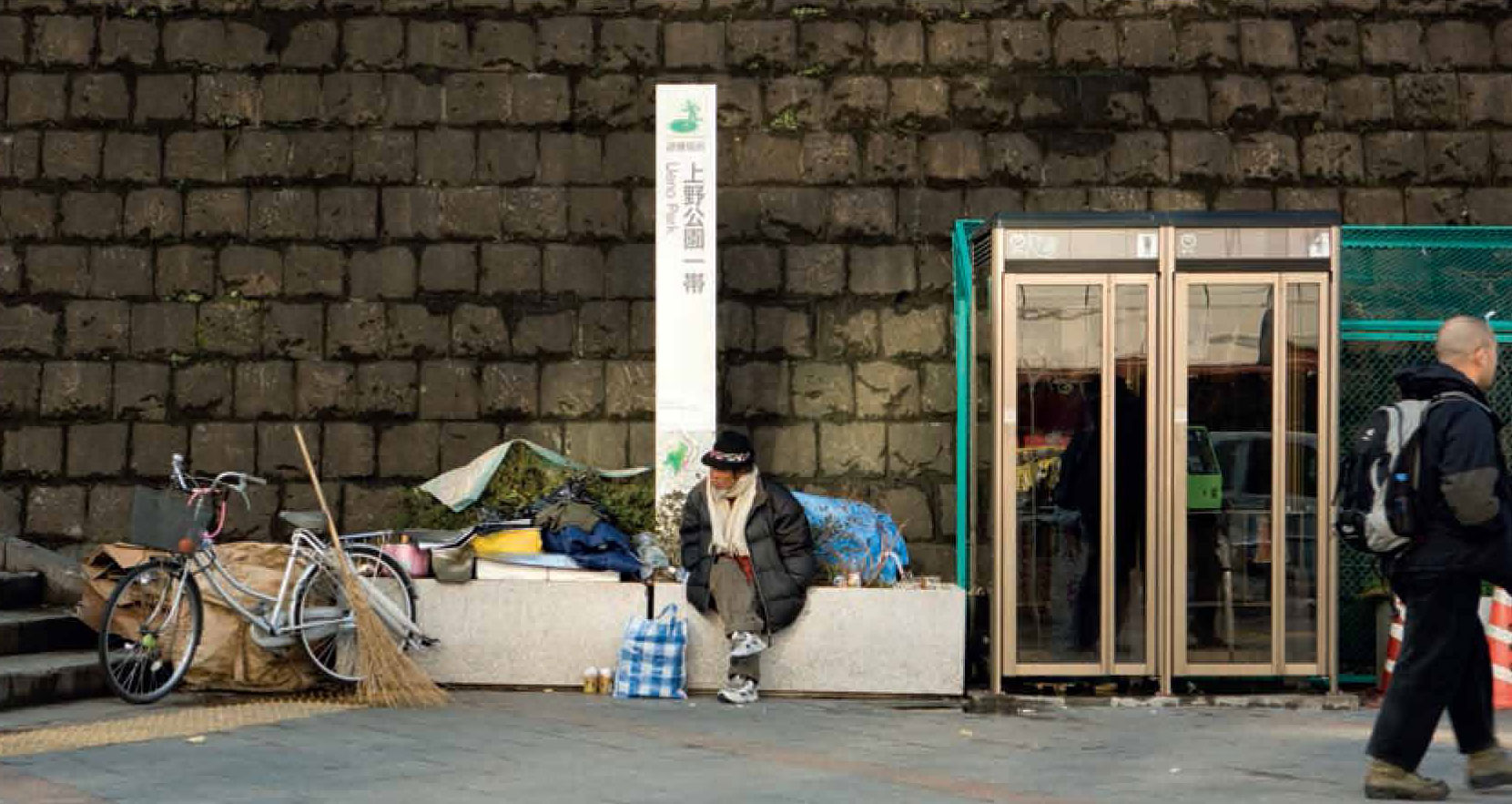How Japan’s broken economic state destroyed the middle-class haven (Text by Kara Kandarakis and photos by Michael Kandarakis)
It was January 10, 2001 at exactly 7pm. The outdoor thermometer on a high-rise building read -2DegC – an unusually frigid winter month for January in Tokyo that year. Matsui watched the snow gently float from the night sky. This may have delighted many of the passersby rushing home or grabbing an after-hours drink. But to an unemployed 42-year-old Kei Matsui, who just dropped off his wife and four-year-old daughter at the homeless shelter, it meant another freezing night outside.
“I wondered how much colder it was going to get,” Matsui recalled, as he reflected on that fateful night. When he secured a sleeping spot, he would search for one-off manual labour via his prepaid mobile phone – all odd jobs in Japan are channelled through mobile websites.

Code of dignity
Cleanliness came before hunger: whenever he got his hands on some cash from a day’s labour, he’d get a hair cut and wash up at an Internet café. Being presentable was his biggest priority: code of dignity – this prevented him from a complete emersion into the homeless state of mind. As well, it allowed him to use the pleasant department store bathrooms. If you look decent, no one stops you.
Most people who are forced to live on the streets end up pawning everything they own for food. Matsui held on to his laptop, and for a good reason. Before he lost everything to recession, he was an established fiction writer and a bookstore owner, so he did what he knew best: started pitching his homeless autobiography piece to every publisher in town.
One publisher showed interest. He was told to submit a few sample chapters. However, he now had to get his hands on electricity to power up his laptop in order to write. Without money, he couldn’t even sit in a café to get access to a wall socket. So he wrote on any blank paper he could get during the day, and then at nights and on weekends, he’d sneak down to the basement of an unmanned car park at the publisher’s building, using the power there to enter his manuscript. It was an excruciating drill. The book was to become one of Japan’s bestselling paperbacks.
Reverse discrimination
Not many NPOs (non-profit organisations) exist in Japan supporting the homeless population. The official number of homeless for 2008 was 15,759, but actual numbers could be almost three times that. Shelters predominantly accept women and children only. Similar rules apply for the financial aid for the impoverished. There is a catch however; the rule stipulates a person is eligible for aid only if he/she has a registered permanent address. When you’re homeless, that can be a major deal-breaker. Japanese society tends to look down upon the subsidy system. “In Japan, there is a huge social stigma for homelessness. It’s considered to be a lazy man’s disease – seen as homeless by choice. Society sees it as something to be cleaned up and brushed under the carpet,” says Matsui. It is common knowledge that the government has been ordering NPOs to stop handing out food to the homeless along Tokyo’s Sumida River. It is said that the neighbourhood does not want to see such a disgraceful sight and views it as disturbing the peace.
Privileged minority
Surprisingly, many Japanese undergo the problem of having no security net after losing their income source, despite external perception that the Japanese enjoy privileged lifelong employment (shushin-koyo). Since there are no official figures available, various statisticians have come up with quite a wide range of estimates depicting lifelong employment within the 66.5 million workforce: many Japanese magazines state it’s around the 30 percent mark, but according to international figures, it can range anywhere from 20 percent to 70 percent, depending on interpretations.
Employment ice age
The two-decade-long chronic economic drought in Japan is old news. What is astounding is how lacklustre the ruling government has been toward implementation of effective reforms. And despite who is running the show it all usually ends badly.
In a socialist country such as Japan, it’s odd to find the absence of a safety net. There are few reasons as to why the present system does not account for life outside the salaryman’s corporate safety net, where a working male retires at 60 and lives a comfortable life on a monthly average pension of ¥18,000 (US$2,000). In addition to the government being at fault, many who are in need of financial aid are too proud to collect subsidies. They are labelled impoverished, a terrible social dishonour.
Death row retirement
Kei Matsui’s case is one of the few that has a happy ending: the success of his book allowed him to reunite with his family and resume a normal life. Now that his daughter is 12 years old and attending school, he can laugh about the misfortunes of the past.
For the rest of this article (Asian Geographic No.72 Issue 3/2010) and other stories, check out our past issues here or download a digital copy here